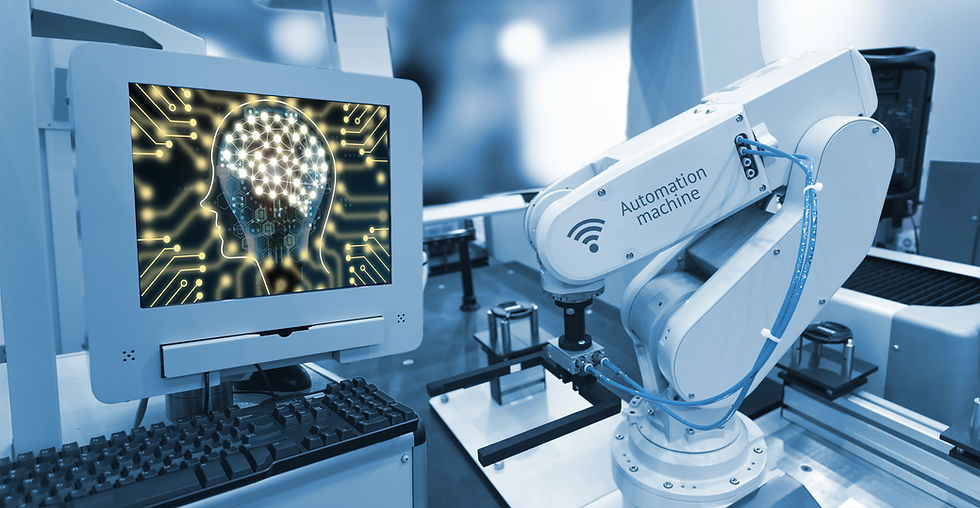The autonomous versus automated conundrum
- Melvin Mathews
- Dec 29, 2019
- 3 min read
Updated: Jul 22, 2020

The terms autonomous and automated are often used interchangeably in the marine industry. This is not unique to the marine industry, but is done so in other industries too. The difference between the two is dictated by the degree of human intervention. An automated vessel does not have the level of intelligence or independence that an autonomous one has. The range between Manual - Automated - Autonomous tends to be a sliding scale of different capabilities of man vs machine. Autonomous is on the side where the vessel makes sufficiently complex decisions on its own. The line between automated and autonomous can be said to be drawn on water and is thus not very distinct.
While in an ideal world a fully autonomous ship would have zero human intervention, in reality there will be some level of human involvement in certain parts of its operations. For example, an autonomous car may pick up and drop passengers autonomously, but may still need human intervention when the tires are worn out or punctured and need changing. Similarly on cruise ships and ferries, human may always be required to ensure safety, security, crowd control, etc.
How automated and autonomous distinctly different
When we talk about human intervention, an autonomous ship does not have the backup crew to take control of the vessel while an automated vessel most likely might have the crew either or board or ashore monitoring the operations and ready to take over when required.
A truly autonomous vessel once activated, seamlessly goes about all operations it is designed for including navigation, docking, fueling, passenger or cargo activity on its own. While this is far from reality, there are segments of a vessels operations that can be operated autonomously. An automated vessel needs humans to trigger a start and stop for each individual activity within the total operations the vessel is designed for (Each separate activity may run automatically but not as a whole).
To give a few examples, individual activities such as UMS (Unattended Machinery Space) operations, autopilot course keeping, etc can be considered automated activity.
Opportunities that come with autonomous shipping
The greatest opportunity is enabling reduction in human error and therefore accidents.
Integration of the global supply chain which will allow better control of cargo flows and trade. JIT (Just in time) arrival and departure at ports allowing efficiency and massive reduction of bottlenecks at ports and warehouses ashore.
Huge reduction in delays at ports due to absence of crew, whose presence requires immigration, security, customs, etc.
Autonomous ships will be built with optimization of cargo and navigation in mind, with no need for crew accommodation, entertainment, welfare, etc.
Challenges or roadblocks for autonomous ships
The technology for autonomous shipping exists. However, the main challenge is the lack of infrastructure and ecosystem surrounding autonomous operations.
Harbours, ports and terminals are not yet prepared for autonomous vessels. Current regulations for example stipulate minimum manning levels for vessels, which do support the innovation around autonomous vessels.
There is no agreed policy or procedures in place to deal with accidents, pollution, cyber-crimes, safety, security, insurance, etc
With autonomous ships, who will take responsibility ashore for anything & everything that happens on board (currently the Captain on board). Will it be sensor providers, or autonomous technology providers, or ship owners or communication providers, remote operators, etc?
Can ships be completely autonomous?
Ships will certainly be autonomous in the future. It will essentially start with small vessels with specific use cases in a controlled environment, followed by those on short coastal voyages.
We may see more ships with certain degree of autonomous operations in the next 2-5 years subject to port and navigational infrastructure catching up.
It will be decades before ocean going ships will be fully autonomous. One of the reasons being the lack of worldwide infrastructure and technology in place to recover autonomous ships with cargo, that may malfunction while in transit and far away from land. If we can develop maintenance drones with the endurance to reach mid-ocean to repair or recover broken down or damaged autonomous ships, then ocean going autonomous ships may become a reality sooner than later.
In summary, while complete autonomy is a moot point, what’s relevant and real is that autonomy is just around the corner, although for now ships may make somewhat limited autonomous decisions. The autonomous decision & authority will be a boundary that gets continuously and incrementally pushed. Who knows when the final limits are crossed for ocean going vessels.
Let me know your thoughts.







Comments